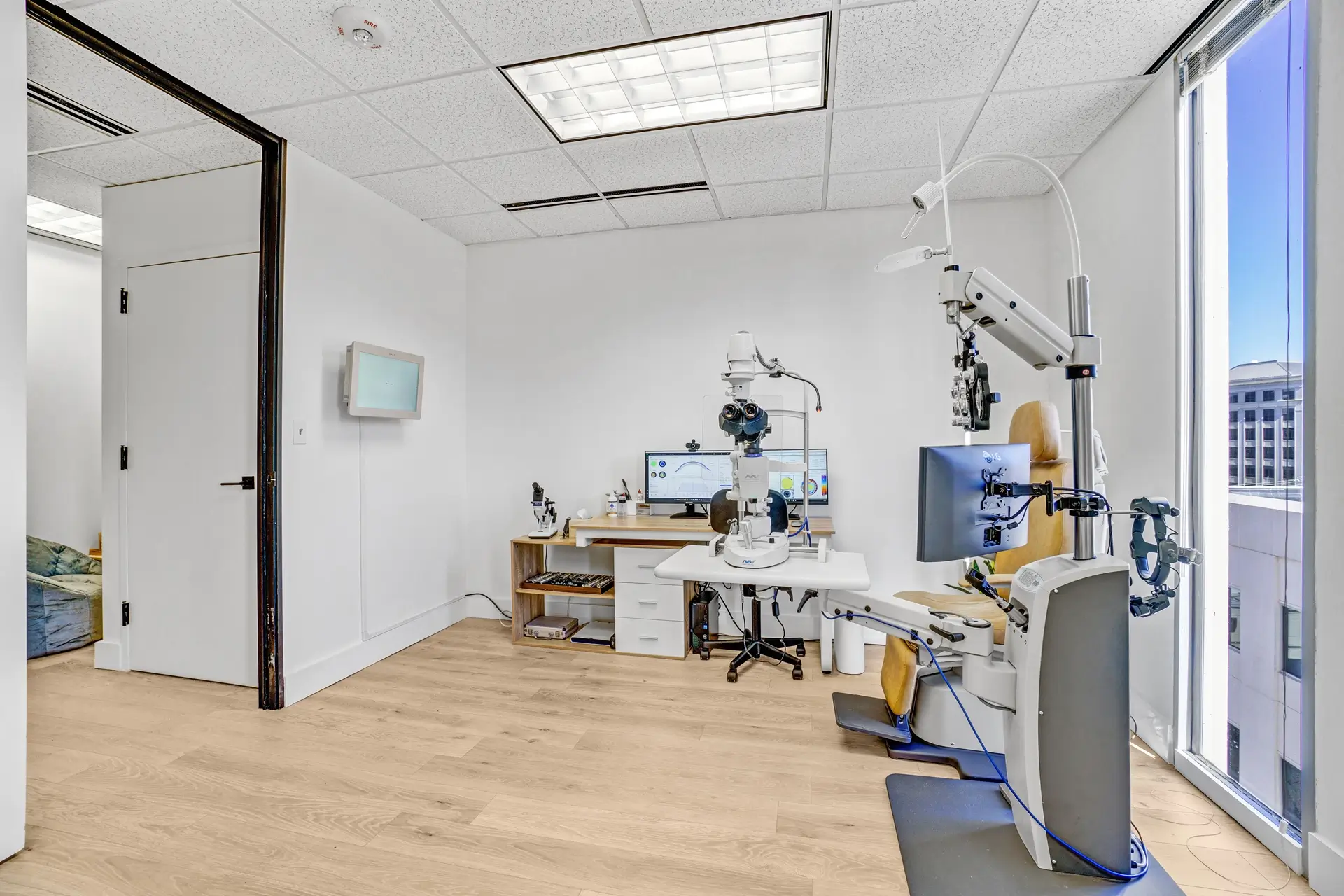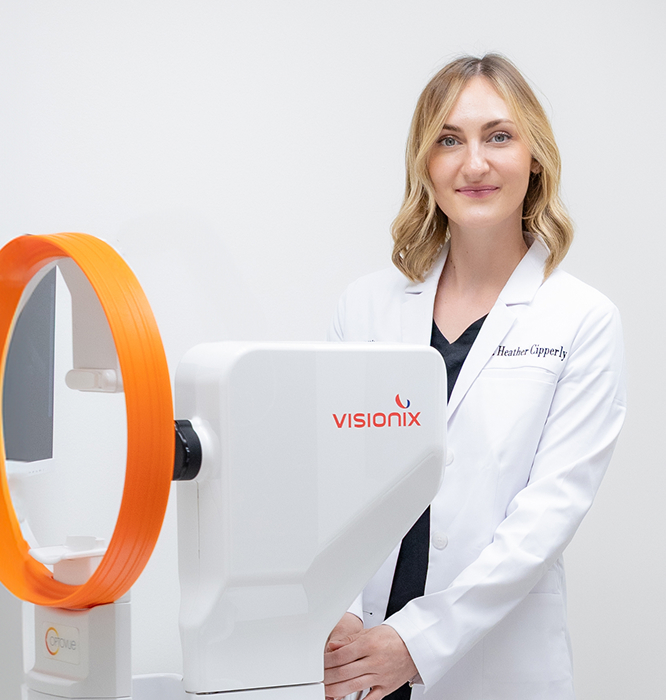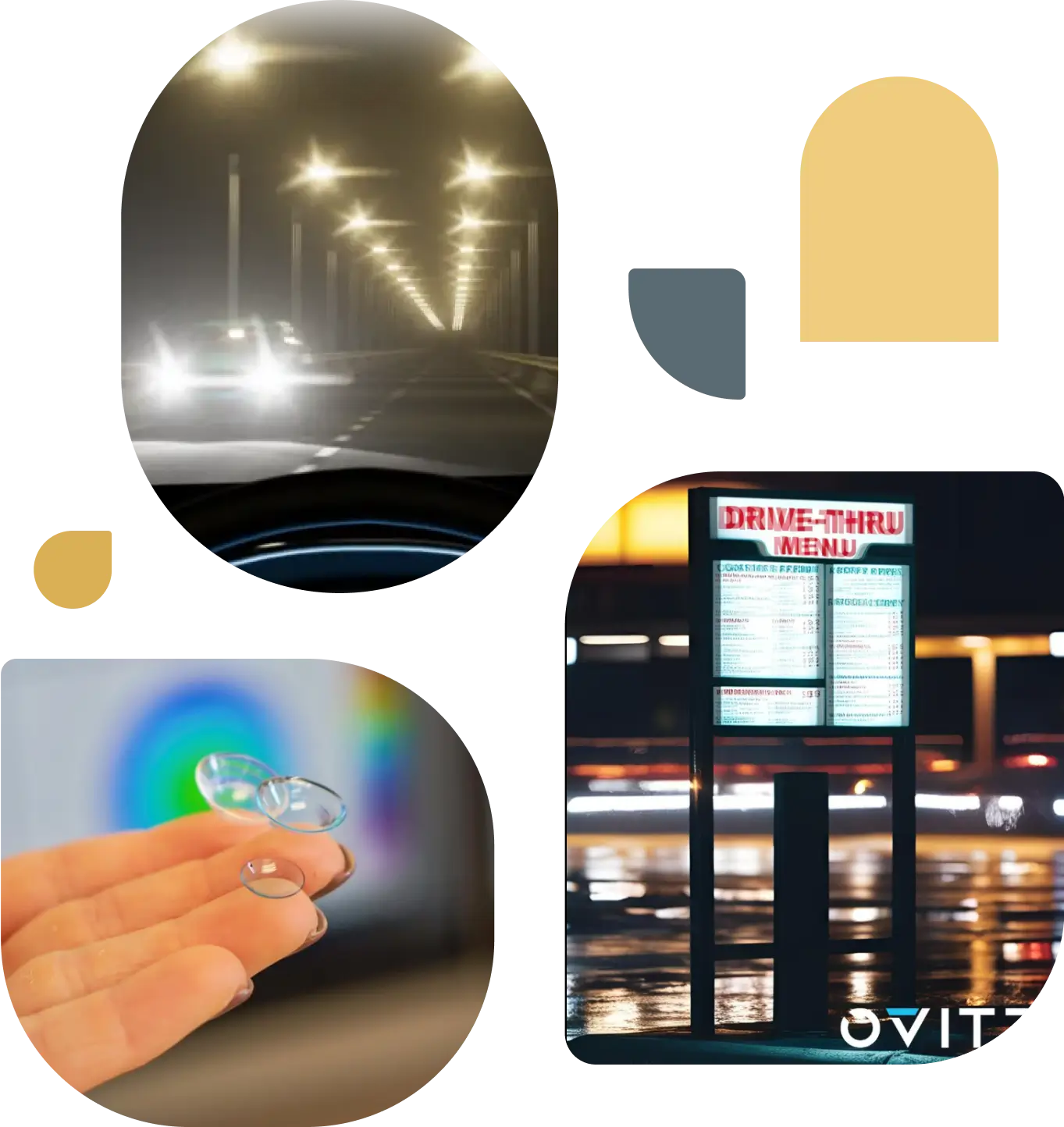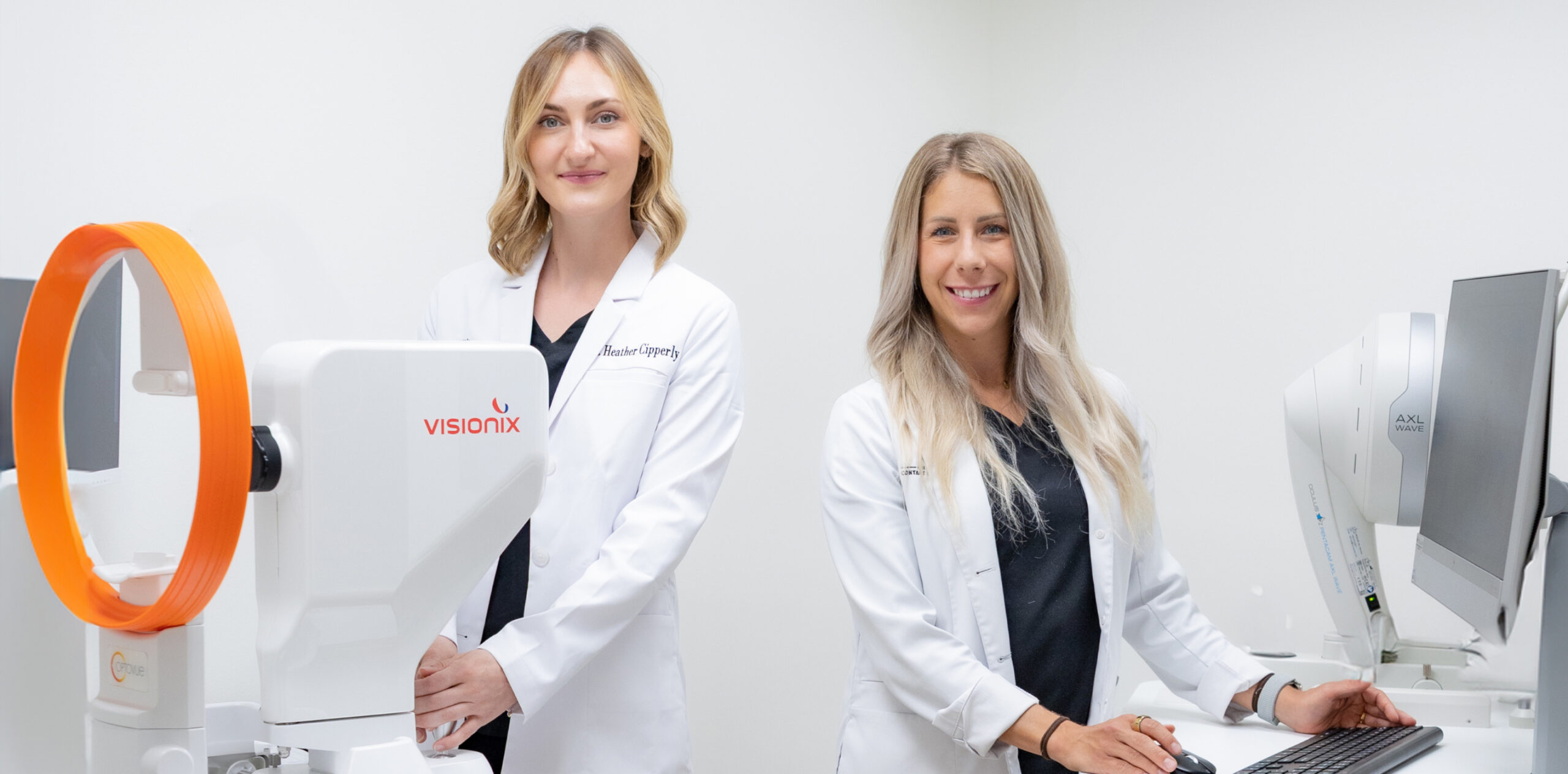
What Is the Ovitz Aberrometer — And Why Does It Matter for Your Vision?
Wavefront-guided contact lenses are redefining vision care for patients with keratoconus, post-surgical complications, and nighttime vision struggles.
If you’ve tried specialty contact lenses but still feel your vision is only “good enough,” you’re not alone. Many patients continue to experience glare, halos, ghosting, or reduced contrast — especially in dim light — even with custom scleral lenses.
That’s where the Ovitz aberrometer makes a difference. At the Charlotte Contact Lens Institute, we use this cutting-edge technology to design lenses that address not only basic prescriptions, but also the subtle distortions that standard lenses miss.
- What Exactly Is the Ovitz Aberrometer?
The Ovitz aberrometer is an advanced diagnostic tool that measures higher-order aberrations (HOAs) — microscopic distortions in the eye’s optical system that glasses and standard contacts can’t correct.
Think of your vision like looking through a window:
- A basic prescription wipes away the smudges.
- But if the glass itself is rippled or warped, the view is still unclear.
- Those ripples = higher-order aberrations.
Using wavefront technology, the Ovitz aberrometer maps tens of thousands of data points in your eye, revealing exactly how light bends and scatters. That data is then used to create a wavefront-guided scleral lens, custom-built to neutralize those imperfections.


- How Ovitz Differs From Standard Scleral Lenses
Traditional scleral lenses are excellent for comfort and clarity, but they are primarily customized for fit and basic prescription power. They usually don’t address HOAs unless designed with additional technology.
With Ovitz, the process looks like this:
- Stable Fit – We first fit you in a comfortable scleral lens.
- Wavefront Scan – Using the aberrometer, we measure HOAs unique to your eye.
- Custom Optics – These data points are built into your lens design.
- Sharper Vision – The result: reduced distortions, improved contrast, and better night vision.
This level of customization is especially valuable for:
- Keratoconus and pellucid marginal degeneration (PMD)
- Post-LASIK or post-RK ectasia
- Patients with vision complaints despite a well-fit scleral lens
- Anyone struggling with glare, halos, or poor night vision
- What Benefits Do Patients Notice?
While every patient is different, those fitted with Ovitz-enhanced lenses often report:
- Reduced glare and halos when driving at night
- Sharper, more detailed vision
- Less ghosting or “shadow” images
- Improved contrast and clarity in low light
In many cases, patients describe their vision improving from “good” to truly exceptional.
- What’s the Fitting Process Like?
At the Charlotte Contact Lens Institute, the Ovitz process is built into your specialty lens care:
- Baseline Fit – Standard scleral fitting with advanced devices like the Pentacam AXL Wave and scleral profilometry.
- Wavefront Imaging – You wear a scan-specific lens with markers for a few hours, then we capture precise wavefront data.
- Custom Lens Design – Engineers convert the data into a personalized wavefront-guided lens.
- Delivery & Refinement – Your lenses are fitted and fine-tuned over 2–3 follow-up visits.


- Why Consider Ovitz?
The Ovitz aberrometer represents the next frontier in specialty contact lenses. If you’ve tried scleral lenses but still struggle with visual disturbances — or if you want the best vision possible from the start — Ovitz could be the solution you didn’t know existed.
Serving Charlotte, Raleigh, and patients nationwide who travel for advanced care.